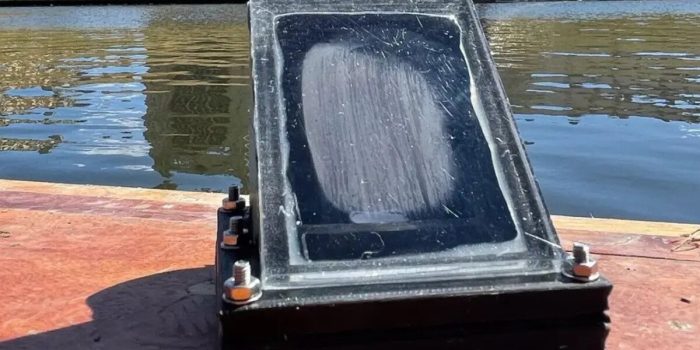In response to the multifaceted challenges posed by climate change, scientists are innovating ways to harness renewable energy for the development of crucial resources essential for human survival. A groundbreaking development in this realm is a floating, solar-powered device capable of converting contaminated water, including seawater, into clean hydrogen fuel and potable water.
This invention addresses global issues such as indoor air pollution caused by cooking with unclean fuels, responsible for over three million deaths annually, and the widespread lack of access to clean drinking water affecting 1.8 billion people worldwide.

Crafted by a team at the University of Cambridge, this technology proves particularly valuable in resource-limited or off-grid areas due to its adaptability to any open water source and independence from external electricity. Demonstrating its efficacy, the apparatus successfully generated clean water from severely polluted water, salt water, and even the River Cam in central Cambridge.
Inspired by photosynthesis, the process by which plants convert sunlight into food, the researchers overcame a significant challenge—combining solar fuel production and water purification in a single device. Unlike previous iterations of the ‘artificial leaf,’ which produced green hydrogen fuel exclusively from pure water sources, this new gadget can extract clean drinking water from contaminated or salty sources.
“Solar-driven water splitting, where water molecules are broken down into hydrogen and oxygen, need to start with totally pure water because any contaminants can poison the catalyst or cause unwanted chemical side-reactions,” said Dr Chanon Pornrungroj of Cambridge’s Yusuf Hamied Department of Chemistry, in a statement.
The difficulty lies in solar-driven water splitting, a process breaking down water molecules into hydrogen and oxygen, which traditionally requires pure water to prevent catalyst contamination. This becomes especially problematic in areas with limited access to clean water and purification equipment.
The innovative approach involves placing a photocatalyst on a nanostructured carbon mesh, an excellent absorber of both light and heat. This mesh generates the water vapor essential for the photocatalyst to produce hydrogen. To counter potential contamination, the porous carbon mesh is coated to resist water, allowing the photocatalyst to float while staying clear of pollutants in the water below.
“The light-driven process for making solar fuels only uses a small portion of the solar spectrum – there’s a whole lot of the spectrum that goes unused,” said Mohamad Annuar, a solar energy researcher, in a statement.

The technology also optimizes solar energy usage by employing a white, UV-absorbing coating on the device’s top, focusing on hydrogen production through water splitting. The remaining spectrum of sunlight is directed to the device’s bottom, vaporizing water. This dual functionality efficiently utilizes solar energy for hydrogen synthesis and water vapor production, mimicking the natural process of a leaf.
With its simple design, easy setup, and compatibility with various water sources, the gadget offers a versatile solution to global energy and water challenges. Its tolerance to pollutants and the floating design enable it to operate effectively in cloudy or muddy water, making it a highly adaptable system. This innovation represents a significant step towards addressing critical issues by providing both clean fuel and water in a sustainable and accessible manner.
“It’s so tolerant of pollutants, and the floating design allows the substrate to work in very cloudy or muddy water. It’s a highly versatile system,” said Pornrungroj.


